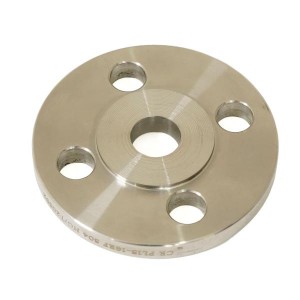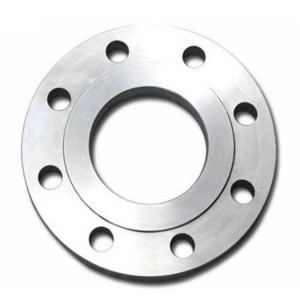Stainless Steel Flange Hubbed Slip Wn Flange



Flanges are essential components used in piping systems, equipment, and structural applications to connect pipes, valves, pumps, and other machinery. They provide easy access for cleaning, inspection, or modification. Here’s a detailed description:
1. Definition
A flange is a protruding rim, collar, or rib on an object (like a pipe, beam, or vessel) used for strength, alignment, or attachment. In piping systems, flanges facilitate the assembly and disassembly of components.
2. Types of Flanges
Flanges come in various designs based on application, pressure, and connection type:
By Connection Type
- Weld Neck (WN) – Welded to pipes, suitable for high-pressure systems.
- Slip-On (SO) – Slides over the pipe and is welded for moderate pressure.
- Socket Weld (SW) – Pipe inserts into the flange and is fillet-welded.
- Lap Joint (LJ) – Used with stub ends for easy alignment in low-pressure systems.
- Threaded (THD) – Screwed onto pipes without welding, ideal for small diameters.
- Blind (BL) – Closes the end of a piping system for testing or future expansion.
By Face Type
- Flat Face (FF) – For low-pressure applications, full contact with gasket.
- Raised Face (RF) – Most common, with a raised sealing surface.
- Ring-Type Joint (RTJ) – Uses a metal ring gasket for high-pressure/temperature.
- Tongue & Groove (T&G) – Ensures precise alignment and sealing.
3. Materials
Flanges are made from materials compatible with the piping system:
- Carbon Steel (ASTM A105) – General-purpose use.
- Stainless Steel (ASTM A182 F304/316) – Corrosion-resistant.
- Alloy Steel (ASTM A182 F11/F22) – High-temperature applications.
- Duplex/Super Duplex – For aggressive environments.
- PVC/CPVC – Used in low-pressure corrosive systems.
4. Standards & Specifications
Common standards include:
- ASME/ANSI B16.5 – For pipe flanges up to 24″ NPS.
- ASME B16.47 – Larger-diameter flanges (Series A/B).
- API 6A – For oil & gas wellhead equipment.
- EN 1092-1 – European standard (PN/DN ratings).
5. Pressure Ratings
Flanges are rated based on pressure-temperature capacity:
- Class 150, 300, 600, 900, 1500, 2500 (ASME)
- PN6, PN10, PN16, PN25, PN40 (EN)
6. Applications
- Oil & Gas – Pipeline connections, refineries.
- Chemical Processing – Corrosive fluid handling.
- Water Treatment – Pump and valve connections.
- Power Plants – High-pressure steam systems.
7. Installation & Gaskets
Flanges require proper bolting and gaskets (rubber, PTFE, spiral wound, or metal) to ensure leak-proof joints.
Mila














